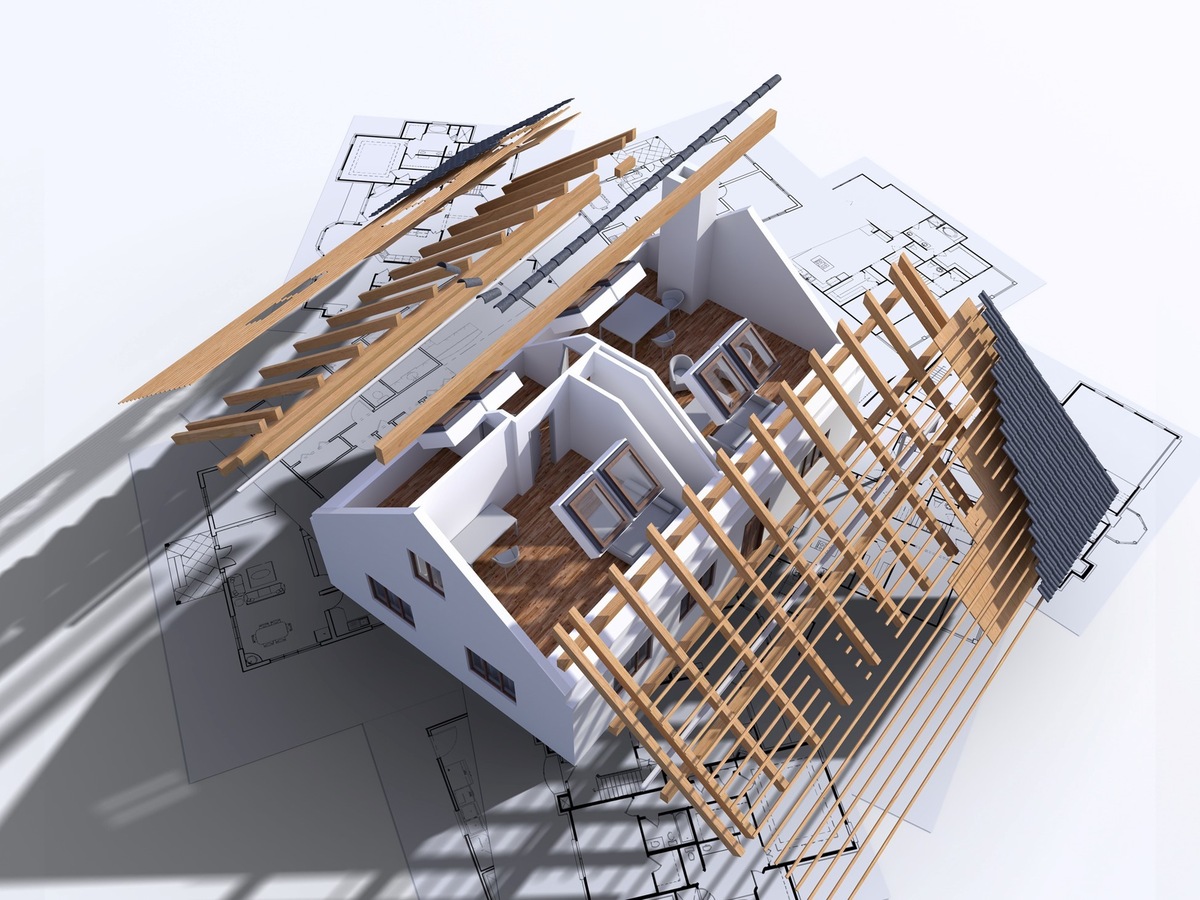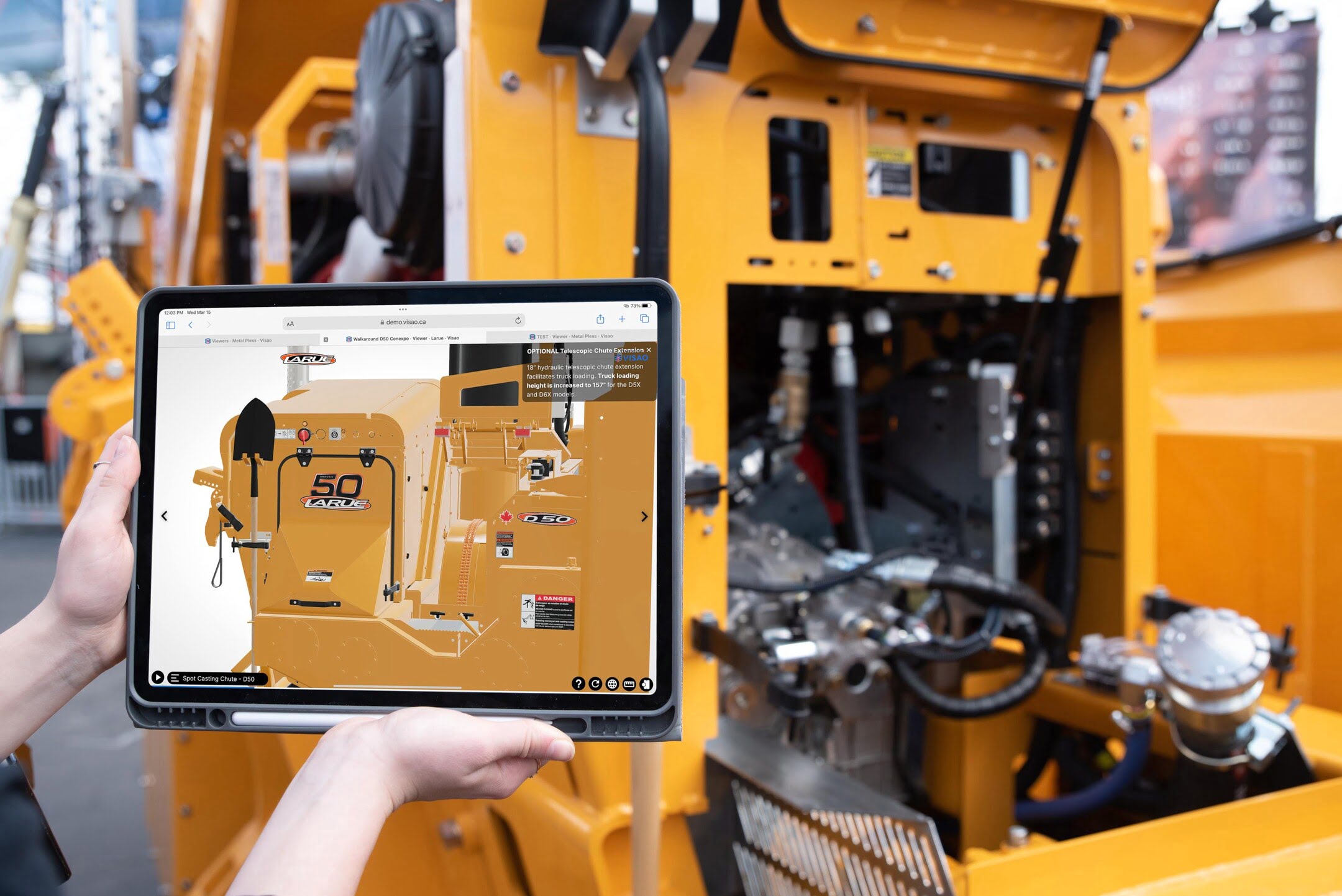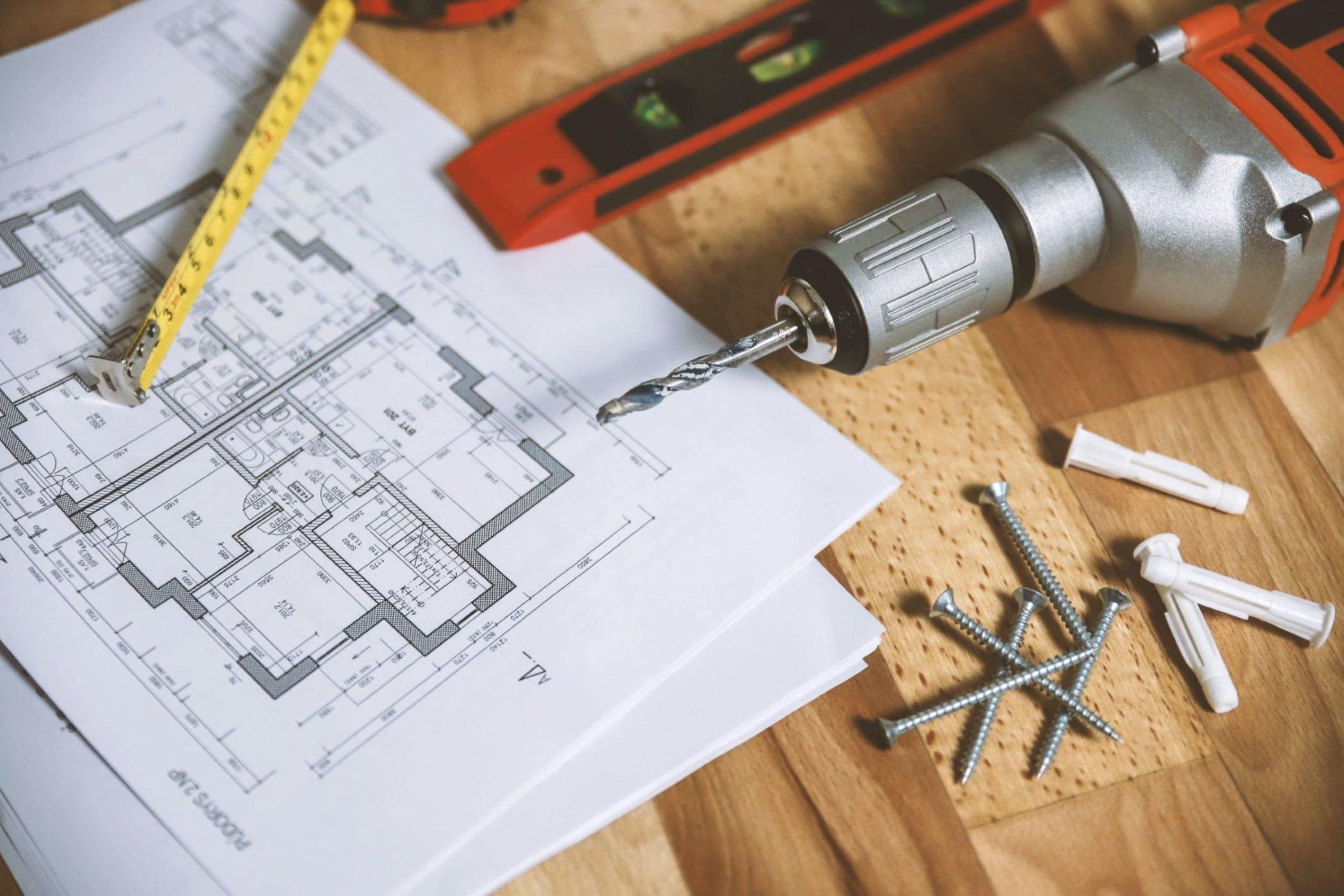Home>diy>Building & Construction>What Are The Steps In A Construction Project


Building & Construction
What Are The Steps In A Construction Project
Modified: December 7, 2023
Discover the essential steps in a building construction project. From planning and design to execution and completion, learn how to successfully navigate every stage of the construction process.
(Many of the links in this article redirect to a specific reviewed product. Your purchase of these products through affiliate links helps to generate commission for Storables.com, at no extra cost. Learn more)
Introduction
Welcome to the world of construction projects! Building construction is a complex and fascinating process that involves careful planning, precise execution, and a multitude of steps to ultimately bring a structure to life. From concept to completion, each construction project goes through several stages, each with its own unique set of tasks and requirements.
In this article, we will explore the various steps involved in a typical construction project, providing you with a comprehensive understanding of the process. Whether you are an aspiring architect, a homeowner planning a renovation, or simply curious about the inner workings of construction, this article will equip you with valuable insights.
While every project is unique and may have specific variations, the fundamental steps remain consistent. These steps typically include project initiation, design and planning, pre-construction, procurement, construction, and project closeout. Let’s dive into each of these steps and explore what they entail.
Key Takeaways:
- The construction process involves crucial steps from initiation to closeout, emphasizing thorough planning, effective communication, and adherence to quality standards for successful project completion.
- Each phase, from design to procurement to construction, plays a vital role in bringing a building to life, highlighting the complexity and rewarding nature of construction projects.
Project Initiation
The first step in any construction project is project initiation, where the idea for the project is conceived and the initial groundwork is laid. This phase involves brainstorming, feasibility studies, and securing the necessary approvals and permits.
During project initiation, key stakeholders, such as clients, architects, and contractors, come together to define the project’s scope, goals, and objectives. This includes determining the budget, timeline, and any specific requirements or constraints.
One crucial aspect of project initiation is conducting a thorough feasibility study. This involves assessing the practicality and viability of the project, taking into consideration factors such as site location, environmental impact, and financial feasibility.
Once the project is deemed feasible, the next step is to obtain the necessary permits and approvals. This may involve obtaining planning permission, environmental clearances, and building permits. It is essential to comply with local regulations and codes to ensure the project can proceed legally.
Furthermore, during this phase, project stakeholders define their roles and responsibilities, establish communication channels, and set expectations for the project. Clear and effective communication is vital for effective collaboration throughout the construction process.
Project initiation sets the stage for the entire construction project, providing a solid foundation for success. By clearly defining the project’s objectives, securing the necessary approvals, and establishing effective communication channels, stakeholders can move forward with confidence towards the next phase.
Design and Planning
After the project initiation phase, the next step in the construction process is design and planning. This is where the vision for the project takes shape, as architects, engineers, and designers work together to create detailed plans and blueprints.
The design phase involves translating the client’s requirements and objectives into a tangible plan. Architects take into account factors such as functionality, aesthetics, and regulatory compliance to create a design that meets the project’s specifications.
During this phase, architects utilize specialized software and tools to create detailed drawings, renderings, and 3D models of the proposed structure. These visual representations help clients and stakeholders visualize the final outcome and make informed decisions.
Collaboration between architects, engineers, and other design professionals is crucial during the design and planning phase. Structural engineers ensure that the building’s foundation and framework can support the intended design, while electrical and mechanical engineers focus on systems such as HVAC, plumbing, and electrical installations.
In addition to the physical design, the planning phase involves creating a detailed project schedule and identifying the required resources and materials. This includes estimating costs, determining the construction timeline, and preparing a comprehensive project budget.
Throughout the design and planning process, architects and engineers work closely with the client to ensure their vision is captured and incorporated into the design. Feedback and revisions are incorporated to refine the plans and ensure they meet the client’s needs and expectations.
At the end of the design and planning phase, the project team will have a finalized design, detailed plans, and a comprehensive understanding of the construction requirements. This sets the stage for the next phase, where the plans are transformed into reality through the pre-construction activities.
Pre-construction Phase
Once the design and planning phase is complete, the project moves into the pre-construction phase. This phase involves a series of essential activities and preparations to ensure a smooth transition from planning to execution.
During the pre-construction phase, contractors and project managers take the lead in organizing and coordinating various aspects of the project. This includes obtaining necessary permits and licenses, conducting site surveys, and establishing safety protocols.
One critical task during this phase is conducting a thorough site assessment. This involves evaluating the condition of the site, noting any potential challenges or constraints, and determining the best approach for construction. Factors such as soil composition, topography, and existing structures are taken into account.
Another crucial element of the pre-construction phase is developing a comprehensive project schedule. This allows stakeholders to have a clear timeline for the construction activities, ensuring efficient coordination of resources and minimizing delays.
Procurement of materials and equipment is also initiated during the pre-construction phase. Contractors work with suppliers and vendors to source the necessary materials, ensuring they meet the project’s specifications and quality standards.
Additionally, establishing robust communication and coordination channels is vital during this phase. Regular meetings with stakeholders, such as architects, engineers, and subcontractors, are conducted to discuss progress, address any concerns, and ensure everyone is on the same page.
Last but not least, pre-construction activities also include putting in place safety protocols and measures. Ensuring a safe working environment is essential to protect workers’ well-being and prevent accidents or injuries.
By completing the pre-construction phase thoroughly, the project team can set a solid foundation for the construction phase. It allows for meticulous planning, minimizing the risk of unforeseen challenges and ensuring a smooth transition into the next stage of the project.
Before starting a construction project, ensure you have a clear and detailed plan in place. This should include a budget, timeline, and all necessary permits and approvals.
Procurement
The procurement phase is an integral part of the construction process, where all the necessary resources and materials are acquired to carry out the project. This phase involves sourcing, purchasing, and managing the delivery of materials, equipment, and services required for construction.
During the procurement phase, contractors and project managers work closely with suppliers, subcontractors, and vendors to ensure a smooth and efficient procurement process. The goal is to secure high-quality materials and services at competitive prices while adhering to project specifications and timelines.
Before procurement activities begin, it is crucial to develop a detailed procurement plan. This plan outlines the requirements, establishes a procurement strategy, and determines the timelines and budget for procuring materials and services.
One important aspect of the procurement phase is the selection of suppliers and subcontractors. This involves conducting a thorough evaluation and vetting process to ensure that the chosen vendors meet the project’s quality and reliability standards. This may include evaluating previous work experience, reviewing references, and obtaining competitive bids.
Once the suppliers and subcontractors are selected, contracts and agreements are negotiated and finalized. These contracts specify the scope of work, deliverables, pricing, payment terms, and any other relevant terms and conditions.
Efficient inventory management is also crucial during the procurement phase. Tracking and managing the delivery of materials, equipment, and services is essential to ensure they arrive on time, are stored safely, and are available when needed during the construction phase.
Communication and coordination play a vital role in the procurement phase. Regular communication with suppliers and subcontractors is necessary to address any issues, clarify requirements, and ensure that all parties are aligned with the project’s objectives and timelines.
By effectively managing the procurement phase, construction projects can ensure a steady supply of materials and services, reducing the risk of delays and disruptions. It also allows for cost optimization and ensures that the project progresses smoothly into the construction phase.
Read more: How To Build An Angled Deck Step-by-Step
Construction
The construction phase is the heart of any building project. It is during this stage that the plans and designs created in earlier phases come to life, as the structure begins to take shape. This phase involves the actual physical construction of the building or infrastructure.
The construction phase begins with site preparation, including clearing the land, leveling the terrain, and setting up temporary facilities such as construction offices and storage areas. Once the site is ready, the construction team proceeds with the building process.
During construction, skilled workers, including carpenters, masons, electricians, plumbers, and other trade professionals, collaborate to complete the various aspects of the project. The construction team follows the approved plans and specifications, ensuring that the building is constructed according to the intended design.
Regular inspections and quality control measures are conducted throughout the construction phase to ensure that the work meets the required standards and regulations. This includes checking the structural integrity, electrical and plumbing installations, and overall safety of the site.
Effective project management is crucial during the construction phase. Project managers oversee the progress, monitor the timeline, coordinate subcontractors, and ensure that the project stays on schedule and within budget. They are responsible for resolving any issues or conflicts that may arise during construction.
Communication between the various stakeholders is vital during this phase. Regular meetings and updates keep everyone informed about the progress, while addressing any concerns or modifications that may be required along the way.
As construction progresses, it is essential to prioritize safety on the worksite. Implementing safety protocols, providing personal protective equipment (PPE), and conducting regular safety inspections help ensure the well-being of the workers and prevent accidents.
Finally, once the construction phase is complete, a final inspection is conducted to ensure that all aspects of the building meet the required standards. This includes checking for any deficiencies or necessary corrections, which can then be addressed before the project moves into the final phase.
The construction phase is a crucial stage of any building project, where the vision becomes a reality. With careful execution, effective project management, and constant communication, construction projects can be completed successfully, setting the stage for the final phase.
Project Closeout
The project closeout phase marks the final stage of a construction project, where the finishing touches are made, and the project is officially completed. This phase involves a series of activities and tasks to ensure a smooth transition from construction to the final handover.
During the project closeout phase, the construction team focuses on completing any remaining work items, such as final painting, cleaning, and installation of fixtures and finishes. This includes addressing any deficiencies or punch-list items identified during the final inspection.
Documentation and record-keeping play a crucial role in the closeout phase. This includes compiling all necessary project documents, such as permits, licenses, warranties, as-built drawings, and operation and maintenance manuals. These documents serve as a reference for future maintenance and operations.
Final inspections are conducted to ensure that all work meets the required standards and complies with the project plans and specifications. Once the inspections are successfully completed, the project is ready for formal acceptance.
Client acceptance and handover are key milestones in the project closeout phase. The client reviews the completed project and verifies that it aligns with their expectations and meets the agreed-upon scope and quality standards. Once the client accepts the project, the formal handover takes place.
During the handover process, the project team transfers all relevant information, documentation, and keys to the client. This includes providing training, if necessary, on the operation and maintenance of the building’s systems and equipment.
Financial matters are also finalized during the closeout phase. This includes addressing any outstanding payments, finalizing contracts with subcontractors, and reviewing the overall project budget and expenses.
Post-project evaluation and lessons learned are essential components of the closeout phase. Project stakeholders review the project’s performance, identifying any successes, challenges, or areas for improvement. This feedback informs future projects and helps refine processes and procedures.
Ultimately, the project closeout phase signifies the completion of the construction project and the transition to the operational and maintenance phase. By diligently managing the closeout activities, projects can end on a high note, with a satisfied client and a well-documented, successfully delivered structure.
Conclusion
Building construction is a multi-step process that requires careful planning, coordination, and execution. Each phase of the construction project, from initiation to closeout, plays a crucial role in ensuring a successful outcome.
The project initiation phase sets the groundwork for the project, defining its objectives, securing necessary approvals, and establishing effective communication channels. The design and planning phase brings the project to life, creating detailed plans and blueprints that guide the construction process.
In the pre-construction phase, the project team prepares the site, conducts assessments, and establishes safety protocols. The procurement phase involves sourcing materials and services, selecting suppliers, and managing the delivery of resources.
Construction is the heart of the project, where skilled workers bring the design to life and project management ensures smooth progress. Finally, the project closeout phase encompasses completing final tasks, conducting inspections, and formally handing over the project to the client.
Throughout the entire construction process, effective communication, collaboration, and adherence to quality standards are essential. By following these steps and incorporating best practices, construction projects can be completed on time, within budget, and to the satisfaction of all stakeholders.
Whether you’re involved in the construction industry or simply fascinated by the building process, understanding these steps provides insight into the complex and rewarding world of construction projects. Remember, each project is unique, and adjustments may be required along the way, but by following these fundamental steps, you can set the stage for a successful and well-executed construction project.
So, the next time you pass by a construction site, take a moment to appreciate the careful planning, coordination, and skill that goes into bringing a building to life.
Frequently Asked Questions about What Are The Steps In A Construction Project
Was this page helpful?
At Storables.com, we guarantee accurate and reliable information. Our content, validated by Expert Board Contributors, is crafted following stringent Editorial Policies. We're committed to providing you with well-researched, expert-backed insights for all your informational needs.















0 thoughts on “What Are The Steps In A Construction Project”